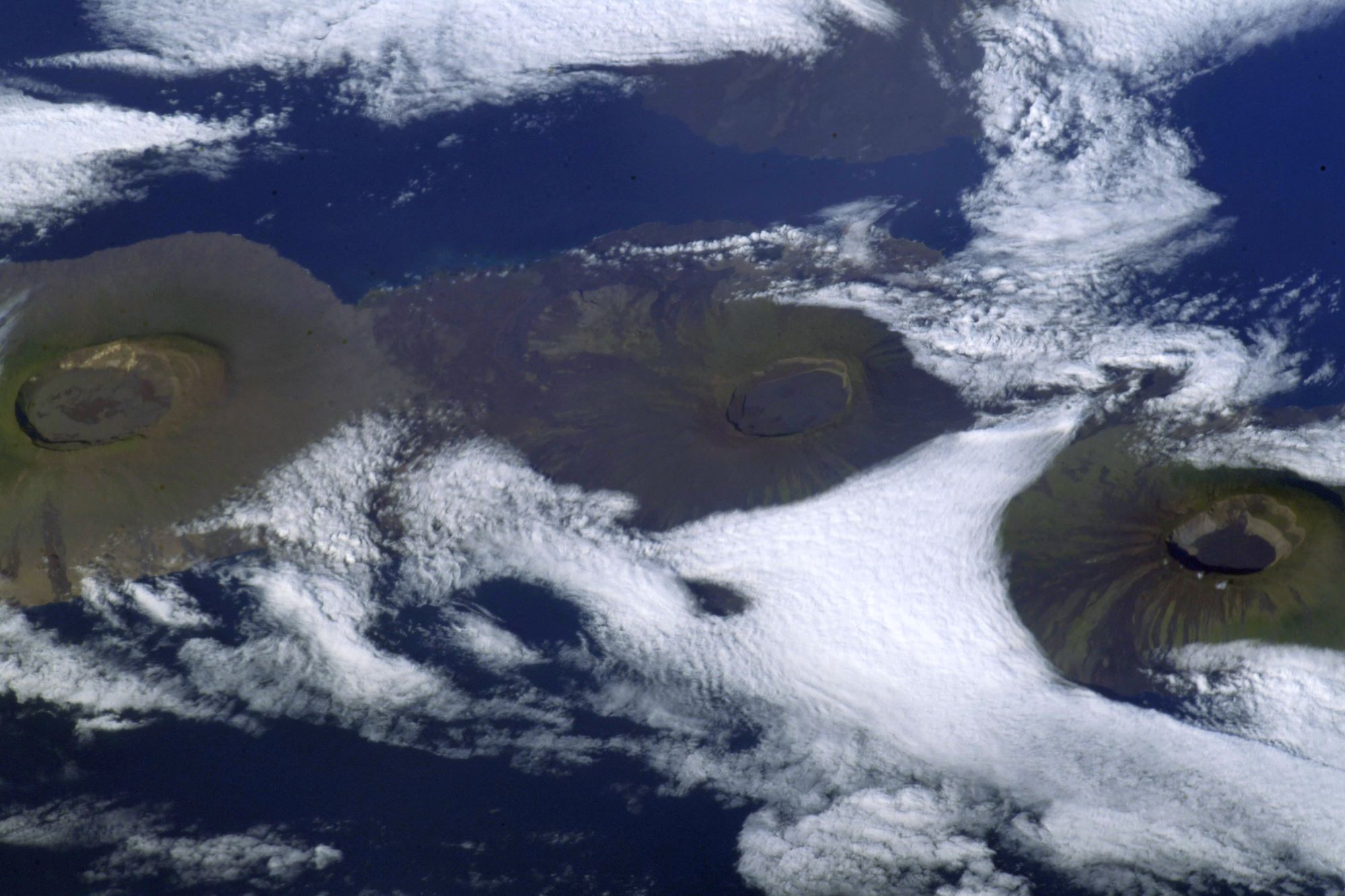[:ja]クリス・キャシディ宇宙飛行士がISSから撮影したエクアドル領ガラパゴス諸島のイサベラ島です。

「ガラパゴス」はスペイン語でゾウガメを意味しますが、大型の爬虫類が地上の動物相で大きな役割を果たしているのが目を引くことが由来とされています。この海洋島は大陸と陸続きになった歴史を持たず、多くの固有生物種が見られ、1978年に世界遺産(自然遺産)として登録されました。イギリスの自然科学者チャールズ・ダーウィンが測量船ビーグル号に乗船し進化論の着想を得ることになった航海で訪れたことで有名です。ちなみに、イサベラ島はガラパゴス諸島のホットスポット付近に列として並ぶ島嶼の西端に位置する最も新しい島の1つです。形成時期は約100万年前から70万年前と推測されています。画像からもわかりますが、イサベラ島は6つの火山よりできており、エクアドル火山以外の5つの連なる楯状火山には直径およそ5-10kmとなるカルデラがあり、それぞれ標高が1,000m以上あります。エクアドル火山を除くそれら5つの火山の全ては、今もなお最も火山活動が活発な場所となっています。
地上の様子はこちらです。

参考文献: Chris Cassidy’s Tweet
地球俯瞰画像を見る: LiVEARTH
[Earthview Wonders] No.1431: Isabela Island of Galapagos Islands🇪🇨
Astronaut Chris Cassidy captured from ISS .

Galapagos means a tortoise in Spanish. As represented by the word, the island never had history of linking to continents and thus nourished vast number of endemic species. The islands were registered as UNESCO World Heritage in 1978. The islands are famous for British scientist Charles Darwin to have visited during the voyage of the Beagle and got inspiration of Theory of Evolution then. Isabela Island is the largest island of the Galápagos and length of 100km. One of the youngest islands, Isabela is located on the western edge of the archipelago near the Galápagos hotspot. At approximately 1 million years old, the island was formed by the merger of 6 shield volcanoes – Alcedo, Cerro Azul, Darwin, Ecuador, Sierra Negra, and Wolf. All of these volcanoes except Ecuador are still active, making it one of the most volcanically active places on earth.
The local scenery on the ground is as follows.

Reference: Chris Cassidy’s Tweet
See earthview photo gallery: LiVEARTH[:]